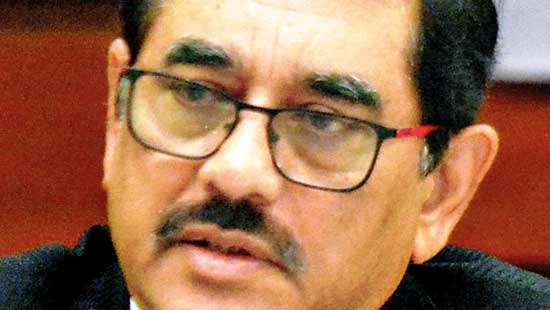Reply To:
Name - Reply Comment

|
Dr. Nandalal Weerasinghe |
The Central Bank yesterday delivered a surprise policy rate cut, bringing nearly two years long tightening cycle to a close and left open the door for further rate cuts in the next few months among other measures to ease remaining restrictions on imports to reverse the prolonged economic contraction.
The Monetary Board decided to cut both Standing Lending Facility Rate (SLFR) and Standing Deposit Facility Rate (SDFR) by an outsize 250 basis points at its meeting held on Wednesday as the members assessed that the policy support by way of lower interest rates is necessary to restart credit flows into the real economy, which has been in contraction since June last year.
“Today is the start of the policy easing cycle,” Central Bank Governor Dr. Nandalal Weerasinghe told reporters in Colombo yesterday.
The Central Bank now appears to be leaning more towards rebooting growth while keeping a closer tab on the hard won economic stability, which until yestersay was given priority when making policy decisions.
“We hope that banks will transmit and bring down, specially the lending rates to businesses,” Weerasinghe said calling for faster pass through of the policy action via banks to help realise Central Bank’s expectations for the economy.
Although the Central Bank had earlier projected 2.0 percent contraction in the economy in 2023, it now expects the growth to land somewhere close to zero level by the end of the year supported by the growth expected in the back half of the year, potentially fully offsetting the contraction projected for the first half.
Although the financial conditions have been slowly easing from the beginning of the year as seen from the slight downward adjustments in government securities yields and market interest rates thus far, the Monetary Board had assessed that further easing in credit and financial conditions could not happen without policy intervention.
The faster than expected deceleration in consumer prices in April and May provide more wiggle room for the members of the rate setting committee to bring forward a rate cut which may have been penciled in for later in the year.
In fact the magnitude of the rate cut made it further clear that the Central Bank wants to prioritise growth going into the second half of the year.
Yesterday’s action also marked the end to one of the longest tightening cycles and the first which caused a historic 7.8 percent contraction in the economy.
After the country ran out of its thin foreign currency reserves, the Monetary Board signed off an unprecedented 700 basis points hike in April last year to arrest runaway prices.
Colombo inflation fell to 25.2 percent in May after easing to 35.3 percent through April from nearly twice as the levels seen just six months ago.
In fact the Central Bank expects inflation to return to single digit levels as early as July due to the substantially higher base effects of last year, which are still at play through at least August, and the prices to be maintained at the desired mid-single digit levels thereafter.
“The Board assessed both upside and downside risks to inflation projections in the near to medium term and viewed that risks to the inflation projections, on balance, are tilted to the downside in the medium term,” the statement by the Monetary Board said.
“Faster deceleration of inflation and lower probability of excessive demand pressures during the economic rebound phase creates space for a gradual policy relaxation in the period ahead,” it added.
However, the Central Bank admitted that the recent easing in official inflation indices is yet to be reflected in household grocery bills and their overall cost of living.
Dr. Weerasinghe also said there was always a time lag before the impact of the appreciation in the rupee is reflected in the prices of imported goods.
He further pointed out to the seasonality in locally produced commodities such as vegetables for their current astronomical prices.